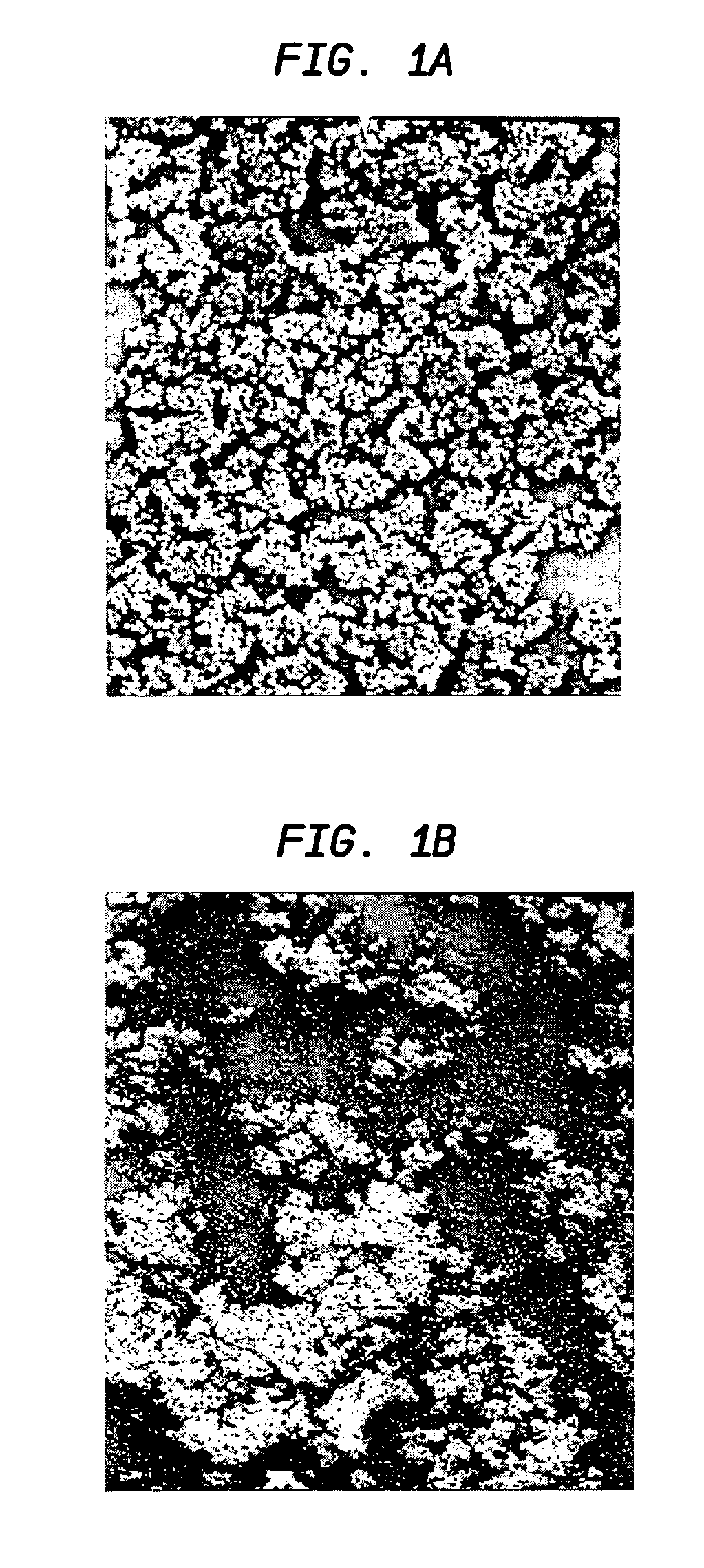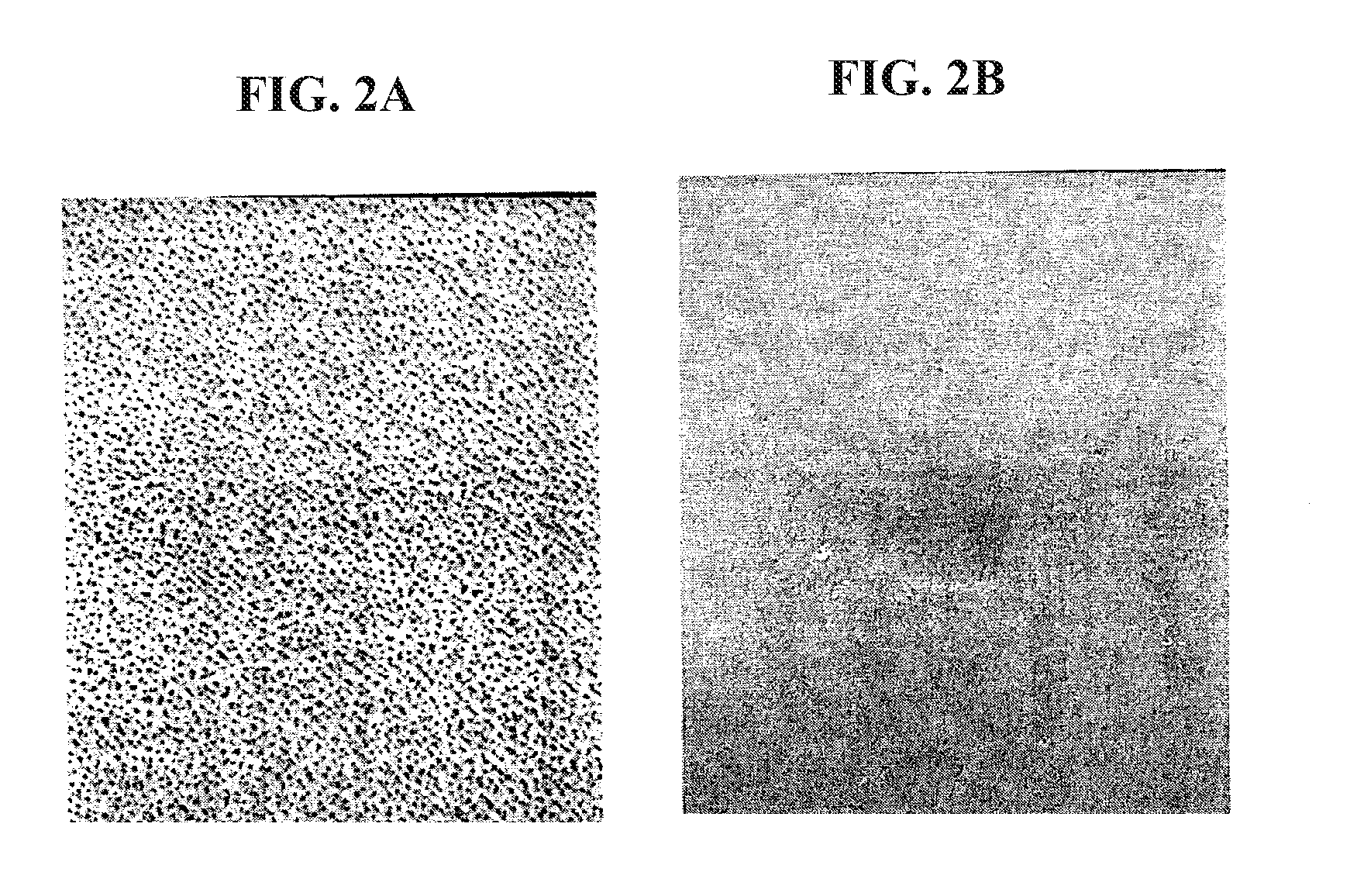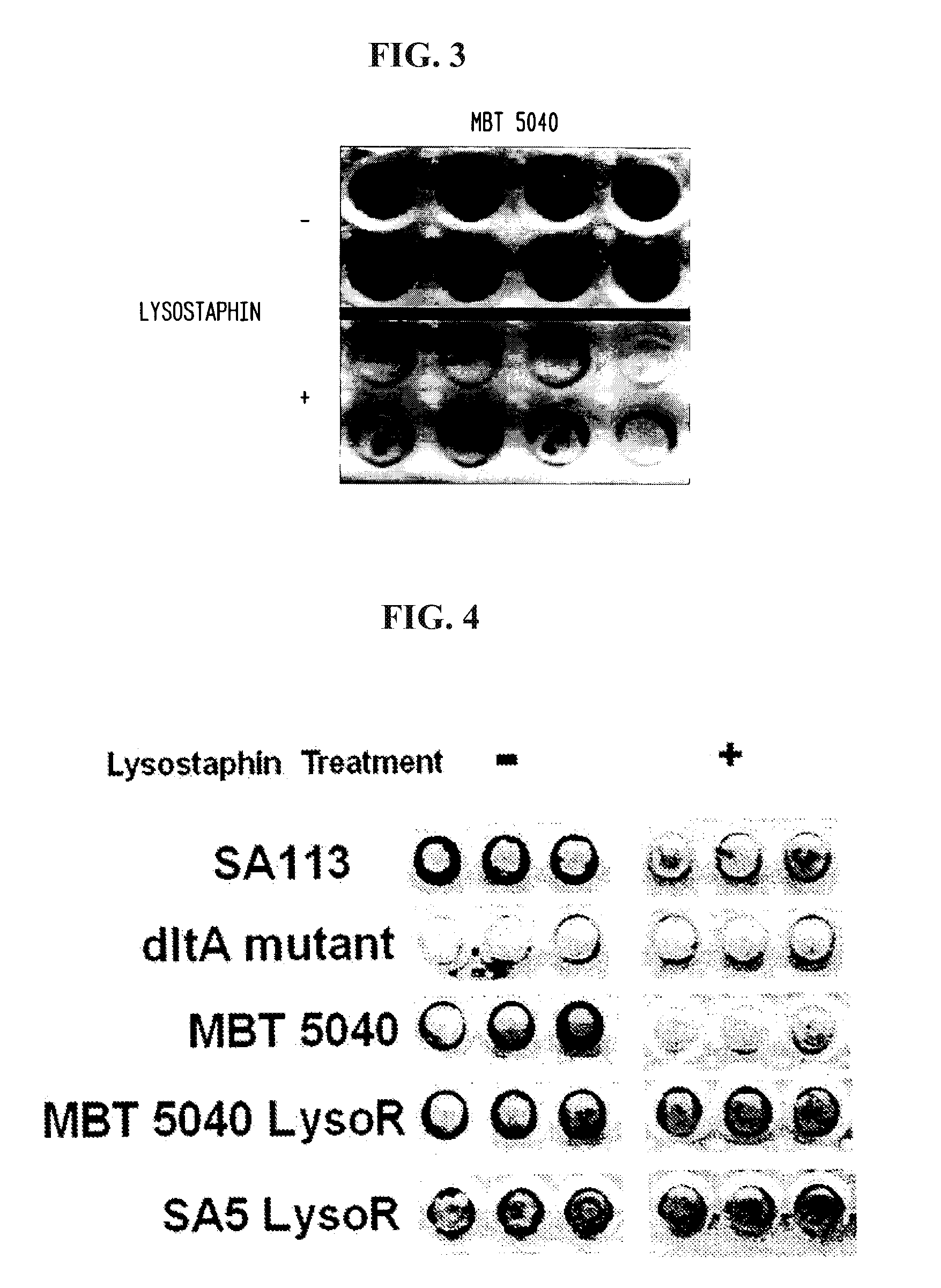Enzyme disruption of bacterial biofilms
a technology of enzymes and biofilms, applied in the direction of prosthesis, catheters, peptides/protein ingredients, etc., can solve the problems of completely destroying the biofilm matrix and eradicating it from the surfa
- Summary
- Abstract
- Description
- Claims
- Application Information
AI Technical Summary
Benefits of technology
Problems solved by technology
Method used
Image
Examples
example 1
Disruption of S. aureus Biofilms with 100 .mu.g / 1 ml Lysostaphin In Vitro
[0058]Staphylococcal strains were stored in .about. 0.5 mL Tryptic Soy Broth (TSB, Difco Bacto) aliquots at −70° C. Prior to each experiment, an aliquot was taken from the freezer, plated on sheep's blood agar (Remel), and incubated at 37° C. overnight.
TABLE 1Bacteria strains used:SpeciesDesignationInformationS. aureusATCC 49521 (SA5)type 5 capsuleS. aureusColMRSAS. aureusCol-lysoRLysostaphin-resistant variant ofaboveS. aureusMBT 5040MRSAS. aureusMBT 5040 lysoRLysostaphin-resistant variant ofaboveS. aureusATCC 35556wild type for belowS. aureusdltA negativedoes not make biofilmS. epidermidisSE 380Clinical IsolateS. epidermidisHAYClinical IsolateS. epidermidisSE 1175Clinical IsolateS. epidermidisATCC 35984High slime producer
[0060]Five ml of TSB supplemented with 0.25% glucose (Sigma-Aldrich) was inoculated with five isolated staphylococcal colonies. The cultures were incubated at 37° C. over...
example 2
Disruption of S. aureus Biofilms With 50 μg / ml Lysostaphin In Vitro
[0068]Methicillin-resistant S. aureus strain MBT 5040 was grown overnight in TSB plus glucose as in Example 1. Twenty four hours later, a 96 well tissue culture plate containing 200 μl TSB plus glucose was inoculated with a 1:200 dilution of the overnight culture, also as in Example 1. The 96 well plate was incubated overnight at 37° C. with shaking and transferred to a stationary 37° C. incubator for an additional 24 hours. After the second incubation, the wells were washed twice with PBS to remove planktonic cells and incubated for three hours at room temperature with either PBS without lysostaphin (−) or PBS containing 50 μg / ml lysostaphin (+). Following another three hour incubation, the wells were washed twice with PBS and then fixed in Bouin's solution (Sigma-Aldrich) for five minutes. The wells were stained with safranin for one minute and washed again with PBS. The results are depicted in FIG. 3, which demons...
example 3
Preparation of Biofilm-Formation Resistant Lysostaphin-Coated Catheters
[0069]Six wells were incubated with 300 μl of either 10 mg / ml, 1 mg / ml or 100 μg / ml of lysostaphin diluted in PBS. All the samples were done in duplicates. The plate was allowed to incubate overnight at 4° C. The following morning the wells were washed with 1 ml of PBS ten times, using vacuum suction to clean out the wells. S. aureus strain SA5 was diluted in PBS to a percent transmittance of 40. A 1:10,000 dilution of this solution was made, and 300 μl was added to each well. The plates were put in a shaking incubator at 75 rpm for two hours at 37° C. After two hours, 40 μl from each well was taken out and plated onto a blood agar plate and put in the incubator overnight at 37° C. The colonies on the plates were counted the following morning.
[0070]Two Angiocath catheters (Becton Dickinson) were incubated with 200 PI of a 100 μg / mL solution of lysostaphin, while two others were incubated in PBS. The catheters wer...
PUM
| Property | Measurement | Unit |
|---|---|---|
| molecular weight | aaaaa | aaaaa |
| body weight | aaaaa | aaaaa |
| concentration | aaaaa | aaaaa |
Abstract
Description
Claims
Application Information
 Login to View More
Login to View More - R&D
- Intellectual Property
- Life Sciences
- Materials
- Tech Scout
- Unparalleled Data Quality
- Higher Quality Content
- 60% Fewer Hallucinations
Browse by: Latest US Patents, China's latest patents, Technical Efficacy Thesaurus, Application Domain, Technology Topic, Popular Technical Reports.
© 2025 PatSnap. All rights reserved.Legal|Privacy policy|Modern Slavery Act Transparency Statement|Sitemap|About US| Contact US: help@patsnap.com



